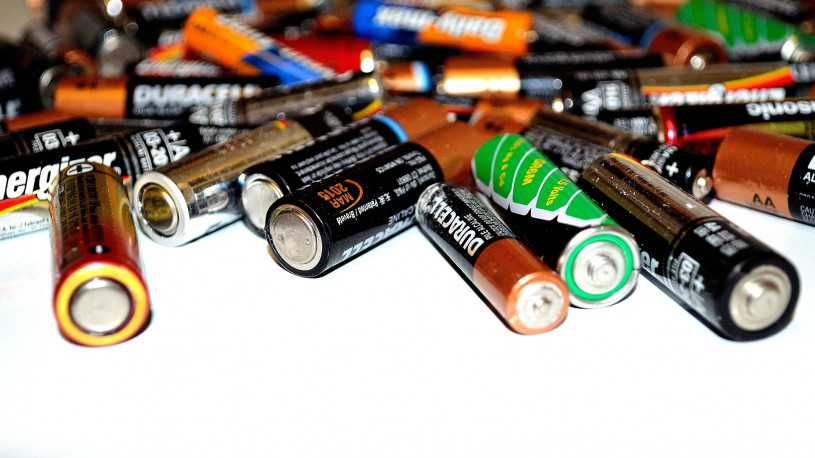-
Is Thermoforming Plastic about to get Colourful?
 Continue Reading
Continue ReadingThermoforming plastic is to date one of the most effective ways of mass producing plastic parts. So much of the modern world (anything from disposable coffee cups to car doors and dashboards), are created by this simple process. But the problem has always been that the technique is not cost effective for smaller batches or individual pieces with intricate shape and colour detail. For products requiring those specifications, expensive machines with hi-tech calibration are required. This has lead to plastics manufacturers who wish to add more colours to their products using paint or stickers to create coloured detail, or worse still opting for expensive 3D printing. That is until now.
As the online trade journal ‘Inside 3D Printing’ reports, “A group of researchers, from both the Switzerland-based ETH Zurich and Disney Research Zurich, have just unveiled an extremely unique process that provides 3D prints with high-quality details in limitless colors. Their new technique, which is coined Computational Thermoforming, uses a combination of an established industrial production technique—called thermoforming—and a new specialized software, which is engineered to provide structurally complex and colored surfaces to individual pieces or small batches of objects.”
The team now plans to exhibit the technique at this year’s ACM SIGGRAPH conference in California, where they will explain the breakthrough in full. For now they have issued a press release which describes the process as follows, “The technique’s core is based on an accurate simulation of the plastic thermoforming process, which ETH doctoral student Christian Schüller developed in the Interactive Geometry Lab under the supervision of ETH Professor Olga Sorkine-Hornung. The simulation computes an image from the coloured surface of a digital 3D model, which is then printed on to a plastic sheet. Through thermoforming, this sheet is then heated and forced into a three-dimensional shape. The key lies in computing the deformed image, so that the colours and patterns align perfectly with the geometric details of the mould.”
In the first step, “a simple 3D printer is used to produce a negative mould of a model made of polylactic acid (PLA), a single-colour plastic. This forms the basis for the temperature-resistant gypsum mould, which is required in thermoforming.”
A computer then calculates the texture of the model, and using a standard laser printer transfers the colour image to a special transfer paper, and then through a heat and pressure process onto a plastic sheet.
“The printed plastic sheet is clamped in a thermoforming machine above the gypsum mould and heated until it becomes malleable. A vacuum quickly sucks the air from between the sheet and the gypsum cast, setting the plastic tight on to the gypsum mould like a skin – creating the plastic replica.”
While the sheet with the image changes shape to match the plastic mould, the computer has already compensated for that change and the colour image perfectly matches the contours of the product.
For now the technique is believed to only have a use on a smaller scale, such as for use by hobby modellers, architects models, manufacturers prototypes etc. However, the relative simplicity of the process combined with the high specification in how multiple colours can match complex contours has attracted the attention of larger producers who are considering how the method can be adapted for large-scale manufacturing.
If this transition is possible, whilst maintaining low production costs, then our world may be about to get a lot more colourful.
You can see the process in action on this YouTube clip.
-
How Marketable is a Polymer Elastic Skin?
 Continue Reading
Continue ReadingResearchers from MiT have developed a polymer skin that humans can wear to can help smooth wrinkles, or protect them from extreme weather conditions and UV rays. In the future the skin may be adapted for applying medicine for those with skin conditions, such as eczema or in assisting burn victims as they recover from their injuries.
The polymer discovery has been made public by the team via the online journal Nature, where they write, “We report the synthesis and application of an elastic, wearable crosslinked polymer layer (XPL) that mimics the properties of normal, youthful skin. XPL is made of a tunable polysiloxane-based material that can be engineered with specific elasticity, contractility, adhesion, tensile strength and occlusivity. XPL can be topically applied, rapidly curing at the skin interface without the need for heat- or light-mediated activation.”
Daniel Anderson, an associate professor in MIT’s Department of Chemical Engineering who was part of the research team described the polymer skin as, “an invisible layer that can provide a barrier, provide cosmetic improvement, and potentially deliver a drug locally to the area that’s being treated. Those three things together could really make it ideal for use in humans.”
The ‘skin’ has great cosmetic potential because, as the MiT News website reports, “the researchers found that the material was able to reshape ‘eye bags’ under the lower eyelids and also enhance skin hydration. This type of ‘second skin’ could also be adapted to provide long-lasting ultraviolet protection.”

Pictures credited to MiT.
This breakthrough is all the more impressive as many other researchers have tried to create artificial skin before. “Creating a material that behaves like skin is very difficult,” says Barbara Gilchrest, a dermatologist at MGH and an author of the paper. “Many people have tried to do this, and the materials that have been available up until this have not had the properties of being flexible, comfortable, non-irritating, and able to conform to the movement of the skin and return to its original shape.”
The MiT website further explains how simple the skin is to use, describing the application as, “The XPL is currently delivered in a two-step process. First, polysiloxane components are applied to the skin, followed by a platinum catalyst that induces the polymer to form a strong cross-linked film that remains on the skin for up to 24 hours. This catalyst has to be added after the polymer is applied because after this step the material becomes too stiff to spread. Both layers are applied as creams or ointments, and once spread onto the skin, XPL becomes essentially invisible.”
You can watch the ‘skin’ being applied and tested in this YouTube clip.
For now the scientific community is still considering the full implication of the discovery, but Thahn Nga Tran, a dermatologist and instructor at Harvard Medical School, who was not involved in the research, spoke for many when saying, “I think it has great potential for both cosmetic and noncosmetic applications, especially if you could incorporate antimicrobial agents or medications.”
Meanwhile, in the business world, its many possible uses, especially in highly sought-after anti-aging products, have led to a large amount of interest in getting the polymer to market. What affect this will have on polymer feedstock prices and demands for polysiloxane components remains to be seen.
-
Are you Up to Date with Battery Industry Innovation?
 Continue Reading
Continue ReadingWe live in a world where technology is playing an ever more significant role in our lives. Portable electronics go with us everywhere. They are getting more powerful with each passing year, and with it, grows the need for portable power.
These trends have put battery R&D at the forefront of our scientific frontiers. The financial investment that has taken place has led to the development of numerous new battery products and initiatives that is causing a technological revolution to take place; now.
Here are just some of the developments that have occurred this year alone.
- Zinc-manganese batteries Research by Pacific Northwest National Laboratory has led to what PNNL Laboratory Fellow Jun Liu describes as a, “more viable solution for large-scale energy storage than the lithium-ion and lead-acid batteries used to support the grid today.”
- The development of rechargeable sodium-carbon dioxide batteries at Nankai University in China which “can theoretically store 10 times as much energy weight for weight as commercial lithium–ion batteries.”
- The use of gold nanowires suspended in an electrolyte gel to get a better performing rechargeable battery; one that can ‘keep working efficiently over 200,000 charge cycles’.
Clearly times are changing in the battery industry, and no one knows this better than Norbert Maleschitz, Vice President of Research & Development EMEA at Exide Technologies. As well as a bachelor degree in chemical engineering and a master’s degree in business administration, Maleschitz was the 2012 recipient of the International Lead Award from the ILA.
In a recent interview with the hosts of the upcoming CIEX 2016 conference that will be held on Sep 28-29 in Frankfurt, Maleschitz gave his views on the importance of the industry. He said that, “Battery energy storage plays a vital role in our industry and will become even more important in the future. It will be especially significant in the growing segment of energy storage for automotive and industrial use, such as Hybrid Cars and Renewable Energy Storage.”
While Maleschitz notes that, “lead acid battery technology is pretty matured,” he believes that “combining this technology with novel materials of carbon, like expanded graphite or carbon nanostructures, does show a significant improvement in performance leading to innovative solutions for current and future requirements.” As a result, “battery energy storage will be an important contributor to our future wealth. Combining matured technology with new innovative materials can lead to excellent solutions to address current and future challenges.”
When asked why he is attending the CIEX 2016 conference, Maleschitz explained how the event was ideal for those wanting, “To get the newest insights into innovations in the chemical industry and also meet and network with other people to exchange ideas and thoughts about the future challenges in both the industry and society as a whole.”
With so many new developments in a vital and expanding industry sector it can be difficult to stay up to date in what will become the one of the biggest growing chemical markets of the future. To stay ahead of the curve it is increasingly important to listen to experts like Maleschitz, who is a speaker at CIEX 2016, or to meet other like-minded R&D experts across the chemical value chain to discuss the challenges and opportunities that the industry holds.
Join us at CIEX 2016 and learn from over 40 hand-picked client and supplier speakers from Fortune 500 companies including Henkel, L’Oreal, Dow Chemical, Johnson Matthey, Lonza, Covestro, Evonik, Swarovski, Natura, Dupont, Ineos, DSM, McBride and many more!
CIEX is created for R&D and Innovation experts from the consumer, industrial and specialty chemical sectors. By bringing together all players in the chemical value chain, we create a unique platform for participants to learn, exchange ideas and connect with potential partners.
Join us at CIEX 2016 on Sep 28-29 in Frankfurt! Spotchemi readers benefit from 20% OFF!
To register, please visit: http://www.ciex-eu.org Use Promo code: SPOTC20
Photo credit: Pinterest
